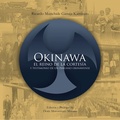Á pesar de haber transcurrido más de cien años de presencia japonesa, la fusión entre sus descendientes y el Perú no se ha producido. Si bien existe un profundo intento de integración y unidad, la experiencia histórica de mutua desconfianza entre ambas partes ha pesado más. Las clases gobernantes de la primera mitad del siglo XX reclamaban a los japoneses la escasa voluntad de ser peruanos. Y los japoneses acusaban a estos de prejuicio racial y de un anti-japonismo explícito. En verdad, las heridas inferidas a la comunidad japonesa han sido muy profundas. Lo peor de todo es que, a raíz de la extradición del ex presidente Alberto Fujimori, actualmente hay un sector nacionalista que se vale de los medios de comunicación para volver a tratar a la comunidad nikkei con prejuicios raciales y un tono amenazante.
Leyes y actitudes anti-japonesas en Perú
Entre los múltiples capítulos vergonzosos de la historia del Perú, existe uno que brilla por su indignante descaro: el maltrato a la comunidad japonesa durante la primera mitad del siglo XX y las consecutivas actitudes racistas con sus descendientes hasta la actualidad. Por supuesto, estas iniciativas nunca han provenido ni provienen de la población mayoritaria, sino de sus gobernantes y de quienes detentan algún poder mediático. ¿Qué inspiró o inspira estos discursos? Ayer fue la utopía de la república blanca y occidental, hoy la demagogia de la patria cobriza1.
Desde 1899, rápidamente los inmigrantes japoneses consiguieron un sólido éxito económico. Esto despertó la desconfianza del sector político y empresarial que vio con ojos sospechosos la tenacidad, laboriosidad y unidad de la colonia japonesa. Como un comportamiento lógico de solidaridad, los japoneses contrataban a japoneses en sus empresas. Fue entonces que el presidente Luis Sánchez Cerro (1931-1933) decretó la Ley 7505 en 1932, la cual obligaba a las compañías extranjeras a tener 80% de personal peruano. En el primer tercio del siglo XX la presencia de japoneses ya era incontenible y, por ello, el presidente Oscar Benavides (1933-1939), a través de su Canciller Alberto Ulloa Sotomayor, continuó con los ataques legales contra los japoneses. Impuso un límite de 16,000 personas para cada grupo de extranjeros cuando esta colonia ya superaba esa cifra. Asimismo, sabiéndose que los japoneses no inscribían a sus hijos en los registros peruanos, el gobierno dictaminó que los negocios no podían ser traspasados a extranjeros. Para ello, promulgó la Ley 8526 que impedía a los japoneses inscribir como peruanos a sus hijos nacidos antes del 26 de junio de 1936.
Cuenta el periodista Alejandro Sakuda2 que tanto fue el susto que más de 2,500 nisei se inscribieron por vía judicial en las partidas de nacimiento, pues sus padres solo los habían registrado en el Consulado Japonés. Se dice que estas inscripciones llenaron dos páginas del diario La Prensa y que este hecho despertó la sospecha del gobierno. Agrega, además, que el prejuicio era tanto que el escritor Ciro Alegría representó el conflicto comercial entre un japonés y un peruano en su novela inconclusa Lázaro. Un sector del Partido Aprista Peruano afirmaba que se oponían a la inmigración japonesa porque a ésta le gustaba establecerse en grupos, aislándose de la vida del país, hablando su propio idioma y enviando a sus hijos a escuelas japonesas. No faltaron los volantes anónimos y absurdos que hablaban de “quintas columnas” germano-japonesas con treinta mil hombres armados que invadirían el Perú por el río Amazonas, de la amenaza asiática que socavaba la economía nacional, se llegó incluso a advertir que no consumieran en restaurantes de japoneses porque corrían el riesgo de morir envenenados.
La comunidad japonesa, lógicamente, vivía en medio del terror entre amenazas, insultos y agresiones, como la que se produjo el 13 de mayo de 1940 con el saqueo que damnificó a 620 familias japonesas (de las cuales 500 eran okinawenses) y las pérdidas materiales se calcularon en seis millones de soles3. Pero la mayor infamia se dio durante el gobierno del presidente Manuel Prado (1939-1945), cuando 1,582 personas fueron conducidas a campos de concentración en Latinoamérica y Estados Unidos por considerárseles ‘peligrosos’. Para algunas estudiosas: ”La coyuntura de los años treinta y de la Segunda Guerra Mundial fueron momentos en los que los sentimientos antiasiáticos se revelaron sin mayor embozo, una vez que la clase gobernante del Perú, en medio de esa ‘era de los catástrofes en el mundo’, eligió que su lugar estaba al lado de Occidente y sus valores políticos y sociales4.
Para muestra un botón: la historia de Naeko en Cristal City
Naeko Yakabi nació en Perú y a los cinco años fue enviada con su abuela Makato al campo de concentración Cristal City, en California, para reunirse con su abuelo Siyi. Vaciaron sus carteras, revisaron sus pertenencias y sus cuerpos, las bañaron y fumigaron con desinfectante antes de ingresarlas a una polvorienta ciudadela rodeada de púas. Ella se preguntaba: ¿por qué la alambrada, a dónde escaparían si pudieran?, ¿acaso serían delincuentes? Entre las barracas encontraron a su abuelo remendando zapatos y criando cerdos, compartiendo con las demás familias prisioneras el miedo a una masacre. Siyi Yakabi era un inmigrante japonés que llegó al Perú en 1917 y tenía una panadería en Huacho (a 140 kilómetros de Lima). De pronto, la policía lo detuvo y lo deportó solo por el hecho de ser japonés. Al terminar la guerra les prohibieron volver a Perú y eligieron dirigirse a Okinawa antes que quedarse en suelo estadounidense. Allí sobrevivieron en la jungla, devoraron cortezas de árboles, sobreviviendo a las enfermedades y escapando de la ocupación extranjera. Tuvieron que pasar veinte años para retornar a Perú. Para entonces, su madre ya había muerto. Naeko falleció el 2002 y hasta el día de su muerte, ninguna autoridad peruana presentó sus disculpas por el maltrato infligido, como sí lo hizo el gobierno estadounidense a más de cien mil personas de su comunidad japonesa, e incluida la peruana.
La historia de Naeko fue el colofón de una serie de maltratos dirigidos a la población japonesa en Perú. Lo más grave es que este tema todavía es considerado una anécdota y no un asunto político. A mi entender, ni los consecutivos gobiernos ni la actual comunidad nikkei tienen la intención de resolver el tema. Aquí se mezcla el orgullo y el temor. A los gobiernos peruanos les costaría muchísimo reconocer su imperfección como república democrática, por el carácter profundamente racista y discriminador que los ha caracterizado. La comunidad nikkei, por su parte, ha aprendido la lección: tener la ciudadanía peruana no es un asunto de seguridad jurídica sino de coyuntura política. La amenaza de una expulsión nacional siempre flota en aire.
La excusa Fujimori para el racismo
“Mejor, no mete en política”, nos aconsejaban nuestros padres porque para ellos la política significaba conflicto y peligro para los japoneses. Sin embargo hubo un nikkei, Alberto Fujimori, que se metió en política y llegó hasta presidente de la república (1990-2000); y la repercusión es que con él metió a toda la comunidad nikkei a la política. Todo lo que hace o deja de hacer repercute, absurdamente, en cada nikkei en Perú como si fuéramos contados a granel y no como individualidades. Cuando Fujimori utilizó su nacionalidad japonesa y se refugió en la tierra de sus padres, el gobernador de la provincia de Nagano de aquel entonces5 pidió que salga del país porque podía hacer crecer el sentimiento anti-japonés en Perú. De igual manera un congresista peruano6 de aquellos años, en una de las plenarias del Congreso, afirmó que Fujimori era un irresponsable (por refugiarse en su nacionalidad japonesa) porque ahora toda la colonia japonesa en el Perú tenía que cargar con esta vergüenza. Increíble lógica.
Pero uno de los argumentos más curiosos es aquel que apela a la experiencia histórica de Alberto Fujimori, como integrante de la comunidad peruano-japonesa, para explicar su comportamiento político actual. Es decir, se esgrime que Fujimori atentó durante su gobierno contra los derechos humanos y hundió al país en la corrupción debido a los maltratos sufridos por él en la Segunda Guerra Mundial. ¿Una especie de ángel vengador de la colonia japonesa? Esta tesis es tan ligera como ridícula, y sorprende que la esgriman personas vinculadas a las ciencias históricas. Con esta lógica jamás comprenderíamos la historia y siempre culminaríamos diciendo que integrantes de la comunidad japonesa, china, india, negra, amazónica y otros más, tienen como motivación de sus actos la venganza y el revanchismo histórico. A mi entender, racismo es lo que se esconde en este tipo de discursos que vienen esgrimiendo líderes nacionalistas y personajes mediáticos que vienen utilizando los diversos medios de comunicación.
¿Nuevo brote de anti-japonismo en el siglo XXI? No me arriesgo a responder a esta pregunta. Revisando la historia de los cien años de presencia japonesa y la impunidad con que los gobernantes y líderes mediáticos se movieron para maltratar a las comunidades asiáticas, en el Perú todo se puede esperar.
Como parte en esta contienda, reflexiono y me digo a mí misma que en principio ningún argumento racista debería desbaratar nuestra identificación con el Perú. Como reza el dicho: mucha agua ha pasado bajo el puente y, en el caso de la comunidad peruano-japonesa, el terreno está cimentado. Hoy la comunidad tiene hasta 6 generaciones que hablan perfecto el español, ya no existen colegios exclusivamente japoneses, sus jóvenes sienten suya la historia peruana, y la enorme cantidad de políticos, profesionales y artistas revelan esta identificación nacional. Incluso, las familia nikkei que actualmente laboran en Japón quieren volver al Perú, el cual sienten su único país. A todo esto debemos agregar la poderosa ola de globalización que vive el planeta. En el Perú, si bien no se ha logrado la fusión, la integración que se vive es sólida y marcha con buen pie.
Notas:
1. Esta referencia a lo “cobrizo”, refriéndose a la población indígena, proviene del señor Ollanta Humala en su candidatura a la presidencia el 2006.
2. Sakuda, Alejandro. El futuro era el Perú. Cien años o más de inmigración japonesa. Lima:ESICOS. 1999.
3. Sakuda, Alejandro. Op. Cit., p. 240-241.
4. Yamawaki, Chikako. Estrategias de vida de los inmigrantes asiáticos en el Perú. Lima: Instituto de Estudios Sociales, JCAS The Japan Center for Area Studies, 2002, p. 10
5. Yasuo Tanaka
6. Luis Solari
© 2007 Doris Moromisato






